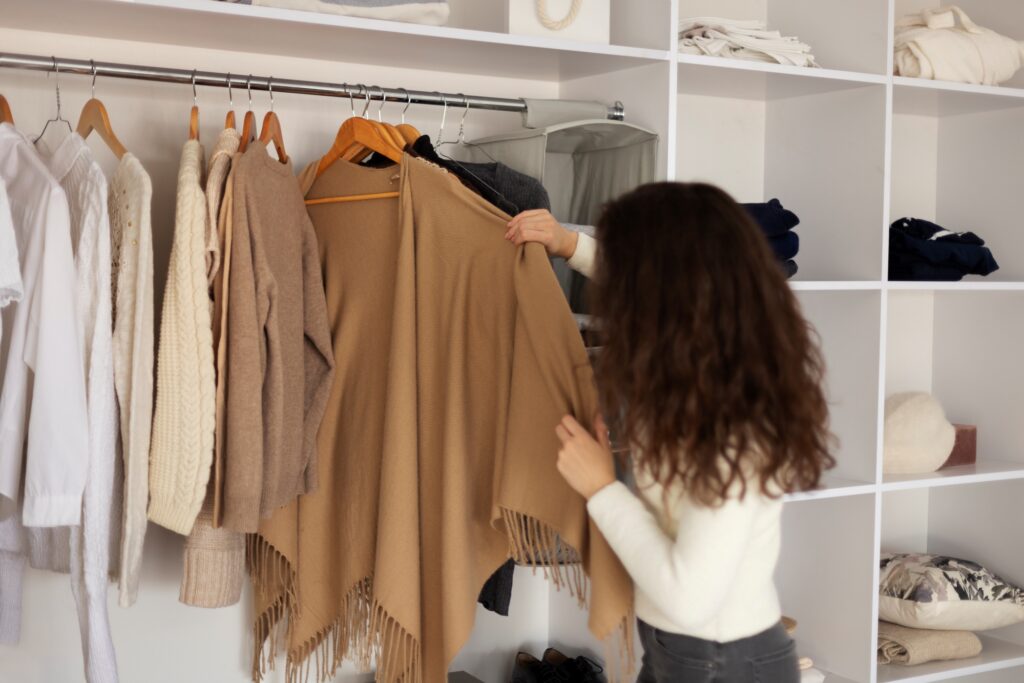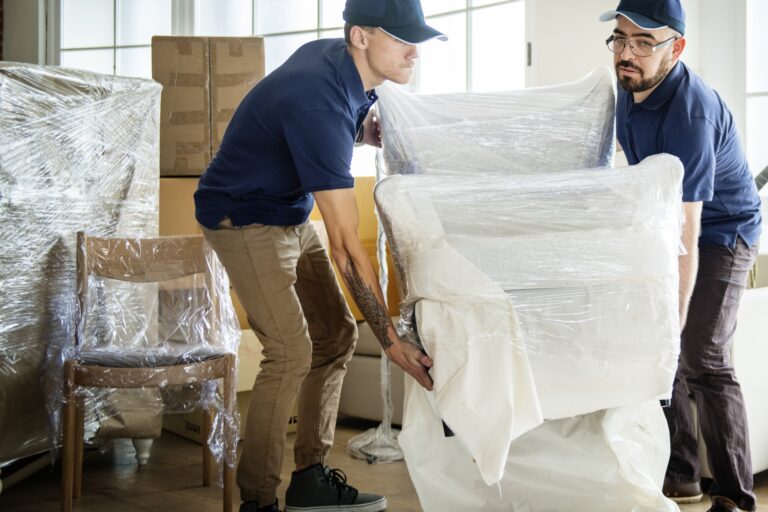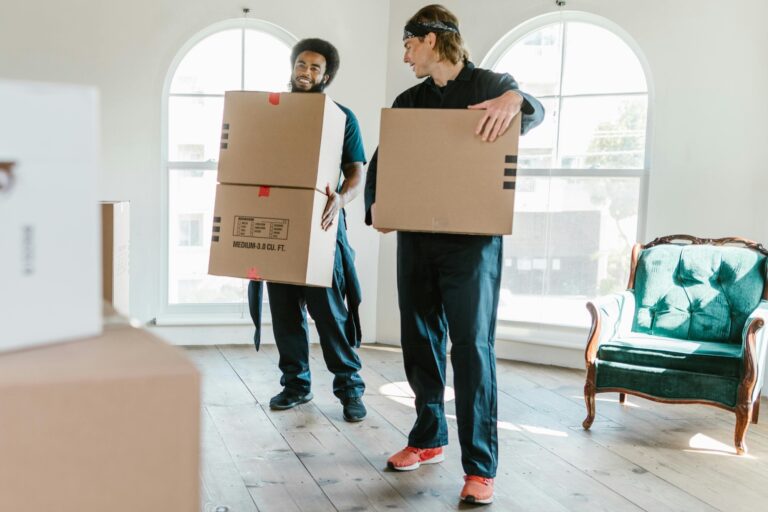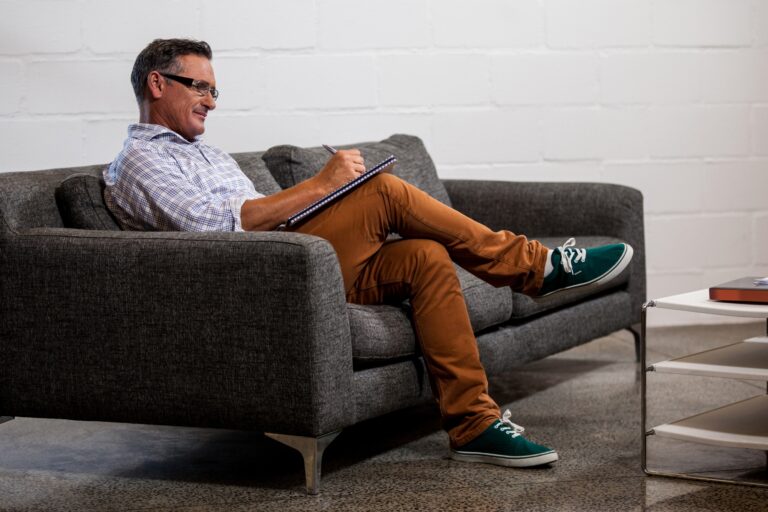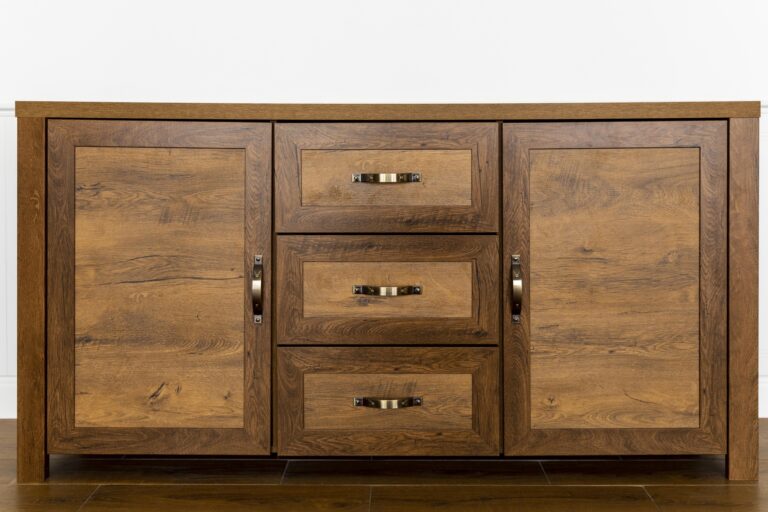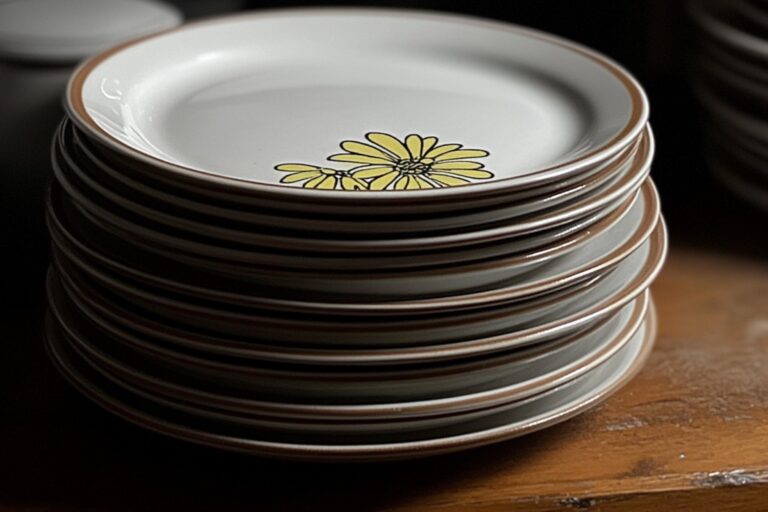Packing household items safely for a move doesn’t have to be stressful. This detailed guide will walk you through the entire packing process, offering top packing tips that cover everything from decluttering and selecting the right packing materials to room-by-room strategies. Learn how to wrap delicate items, utilise cardboard boxes effectively, and label boxes for easy unpacking. With these insights, you can ensure your belongings are well-protected, making your move smooth and worry-free.
Key Takeaways
- Declutter before packing to save time and costs, and keep your new home clutter-free by selling, donating, or disposing of unnecessary items.
- Create a detailed packing schedule and pack room-by-room to stay organised and reduce stress, ensuring a smooth transition by prioritising and managing your time effectively.
- Label boxes clearly and prepare an essentials bag to streamline unpacking and ensure immediate access to necessities, making settling into your new home more efficient and stress-free.
Declutter Before Packing
Start your moving preparations by decluttering. Getting rid of unnecessary items saves time and reduces the number of cardboard boxes needed, cutting down on costs. Begin this process 4 to 6 weeks in advance to sort through belongings methodically. Set specific times for decluttering to stay consistent and make the task more manageable.
Donate items, sell them online, or hold a car boot sale to clear clutter. This helps you avoid packing unnecessary items and keeps your new home clutter-free. Before and after photos can motivate you by showcasing progress and keeping you focused; they can make all the difference.
Create a Packing Schedule
An organised move starts with a packing schedule. Begin packing one to two months before your moving date, starting with non-essential items seven weeks prior. This methodical approach helps you pack without feeling rushed.
Include a realistic timeline and deadlines in your packing schedule, prioritising items based on necessity. Start packing one room at a time to stay organised and avoid mixing items. Two weeks before the move, focus on packing essential kitchenware and ‘Open Me First’ items. Complete packing and conduct a final check one week before moving day.
Stock Up on Packing Supplies
The right packing supplies protect your belongings during the move. Gather essentials like high-quality cardboard boxes, bubble wrap, packing tape, and permanent markers 5 to 7 weeks before your move. Source affordable packing materials online or find free boxes at supermarkets and on platforms like Facebook Marketplace. Have enough boxes on hand to avoid running out mid-pack boxes, which risks overfilling and damaging items.
The right packing materials ensure a smooth and safe move by providing adequate protection for your belongings throughout the moving process. High-quality cardboard boxes, bubble wrap, and packing tape are essential to prevent damage to fragile items and keep everything secure. Investing in the appropriate packing supplies not only safeguards your possessions but also reduces stress and potential costs associated with replacing broken items.
Organise Room-by-Room Packing
Packing room-by-room saves time and reduces stress. It helps maintain focus and prevents items from different rooms from mixing up. Use different colours for each room’s boxes to simplify identification during unpacking. Place labels on the top and sides of boxes for visibility when stacked.
Use moving blankets to safeguard delicate furniture and covers for items like couches and mattresses. Pack small items like spice jars in pots to maximise space. Keep clothes on hangers and cover them with a bin bag for easier transport.
Secure large items in the moving vehicle using cargo straps or rope to prevent shifting during transit. Instead of completely emptying drawers, cover them in plastic wraps or bags to keep the contents intact and save space. This approach simplifies the packing process and minimises the risk of losing small items while moving.
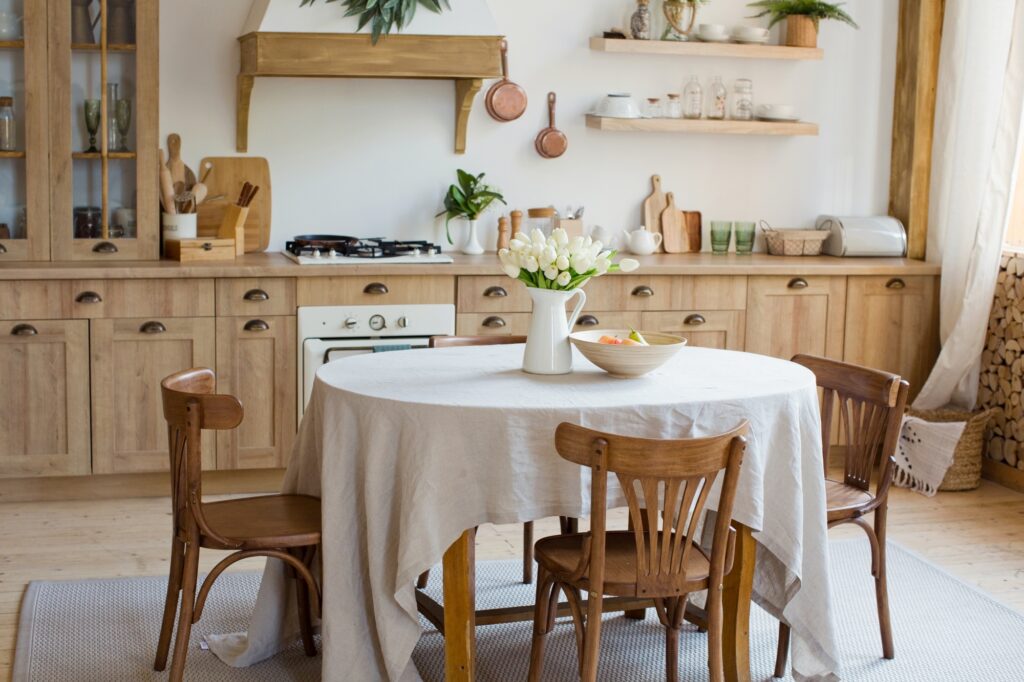
Packing the Kitchen
The kitchen requires careful packing due to fragile items. Wrap each dish in packing paper, bundle 5-6 together, and pack them on their sides with padding. Use a box with cardboard dividers for glasses and wrap them in layers of paper. Store sharp tools in a clearly labelled box or solid toolbox to prevent accidents. Wrap delicate items in linens and towels for added protection. Stack pots and pans inside each other to save space. Properly packing kitchen items avoids damage during a move.
Packing the Bedroom
Use a wardrobe box for hanging clothes to save time and effort. Alternatively, leave clothes on hangers, tie them together, and cover them with a bin bag. Label bedding and linens clearly to make unpacking easier. Keep screws and bolts from disassembled furniture in a sandwich bag taped to the furniture to avoid losing them. Remove drawers from furniture and pack fragile items inside with clothes for added protection.
Packing the Living Room
The living room contains large, valuable furniture and electronics needing special care. Disassemble furniture before moving to prevent damage and save space. Lay something on the floor when dismantling furniture to protect it from scratches. Use blankets and tape to fully cover and protect furniture.
For electronics like TVs, use the original box if available. If not, wrap the TV securely and double-box it with padding. Wrap vulnerable parts of furniture, such as chair legs, with bubble wrap. Rent blankets from a local moving company or use old bedding to wrap furniture.
Securely Pack Fragile Items
Securing fragile items requires careful attention and the right materials. Bubble wrap cushions and provides the first layer of protection for fragile items. Packing paper is another material that protects delicate items. Use box dividers to separate glassware and prevent collisions during transit.
Reinforce the bottom and sides of the boxes with packing tape for stability. Fill empty spaces with cushioning materials to prevent items from shifting. Label fragile boxes clearly to ensure careful handling during the move. Professional packing services can also help ensure fragile items are securely packed.
Utilise Space Wisely
Efficient packing maximises space. Rolling clothes saves space in boxes. Use smaller boxes for heavy items to manage them more easily. Stack items vertically and use the vertical space within boxes. Fill empty spaces in boxes with clothing, towels, or packing paper to prevent items from shifting.
Distribute heavy items evenly across boxes to maintain balance and ease of transport.
Avoid overloading boxes with heavy items to make them easier to carry and reduce the risk of breaking. Here are some packing tips to consider. Distribute heavy items evenly across boxes to maintain balance and ease of transport. Label heavy boxes clearly to ensure appropriate handling during the move.
Special Care for Valuable Items
Valuable items need special care during a move. Keep significant items close for safe transport. Photograph valuable items before packing to document their condition. Using eco-friendly materials can effectively cushion valuable items.
Discuss specialist protection with your removal company, especially for antiques. For glass items, make an X with masking tape to strengthen them. Place cardboard between each framed piece for extra protection.
Items with sentimental or monetary value need extra care during packing. Ensure they are packed with appropriate protective materials like bubble wrap or packing paper to prevent damage. Consider keeping them in a separate box labelled ‘Fragile’ to ensure careful handling during the move.
Jewellery and Small Valuables
Jewellery and small valuables need special attention. Use egg cartons or toilet paper rolls to organise and protect jewellery. Place jewellery in egg sections and secure with tape. Prevent tangling by using a toilet paper roll to store necklaces and secure both ends. Stuff paper or fabric around the edges of the box to keep jewellery from moving. String necklaces through straws or toilet paper roll to prevent tangling.
Important Documents
Keep important documents organised and accessible during a move. Store them in a folder in your suitcase or a clearly labelled box for easy access. Clearly label the separate box containing important documents to avoid confusion. Keeping documents organised prevents loss and ensures easy access when needed.
Label Boxes for Easy Unpacking
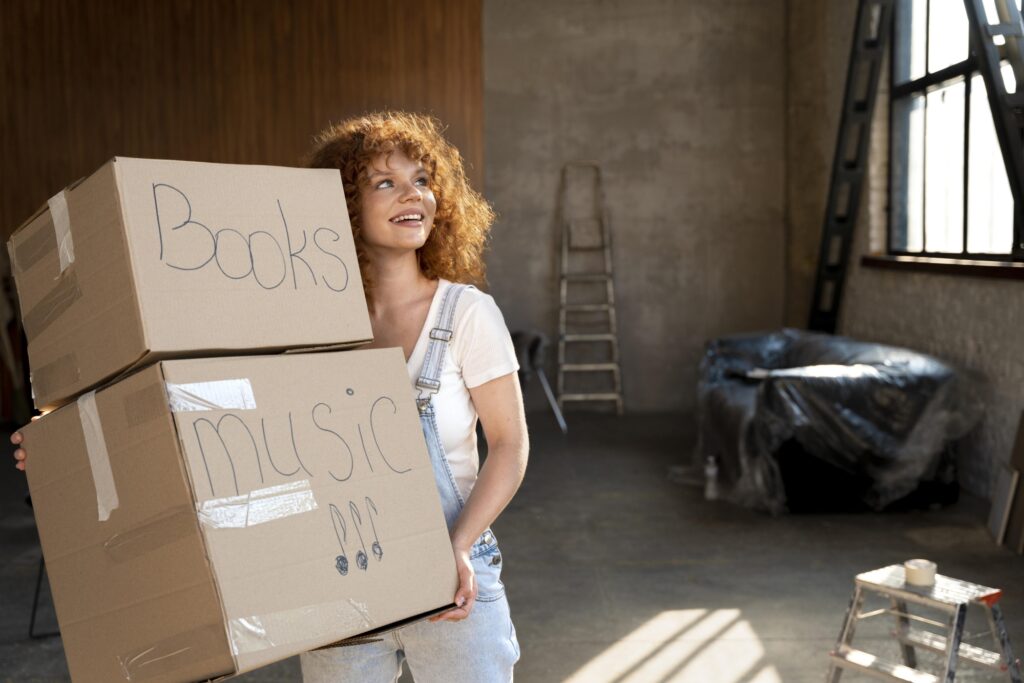
Labelling boxes makes unpacking efficient. Each box should include the room it came from and a detailed list of its contents. Use packing labels or permanent markers to identify box contents and designated rooms. A colour-coded system enhances visibility and smooths the unpacking process. Clear box labels help locate items quickly, reducing stress and confusion during unpacking. This small step makes settling into your new home more efficient.
Pack Essentials
An essentials bag ensures you have everything needed for the first few days. Include clothing, toiletries, medications, and a first aid kit. Prepare an overnight bag with personal items and toiletries for each family member. Use reclosable plastic bags to organise smaller items for better accessibility. Include a flashlight and a small toolkit in your essentials bag for immediate needs after the move.
Consider Hiring Professional Movers
Hiring professional movers can be more cost-effective than a DIY move, as all-inclusive quotes help manage the budget without unexpected costs. Professional movers handle heavy and awkwardly shaped furniture, minimising potential damage to items and individuals. Many moving services provide insurance coverage, offering peace of mind regarding the safety of your belongings during moving house.
Expert movers navigate tricky scenarios, like moving through narrow spaces, reducing complications. Many removal companies offer packing services alongside moving services, making the process more convenient. Employing professional movers reduces the time spent on packing and loading, often saving hours or days. Their involvement makes the relocation process far less stressful by managing all logistics.
Summary
Moving to Clapham can be a smooth and enjoyable experience with the right preparation and packing tips. From decluttering and creating a packing schedule to securely packing fragile items and utilising space wisely, every step is crucial for a successful move. Special care for valuable items and packing essentials can make all the difference in settling into your new home efficiently.
Consider hiring professional movers to further ease the process and ensure the safety of your belongings. With these tips for moving, you’re well on your way to enjoying your new Clapham home. Happy moving!
Frequently Asked Questions
How far in advance should I start packing before moving house?
Start packing about one to two months before your move. Begin with non-essential items and work your way to the essentials as the date gets closer.
What are some tips for packing fragile items?
To keep your fragile items safe, wrap each one in bubble wrap or packing paper, and don’t forget to reinforce the boxes with plenty of tape. Using dividers for glassware also helps prevent any breakage.
How can I make unpacking easier?
Label each box with the room it belongs to and a detailed list of its contents. A colour-coded system can make finding items even easier!
Should I hire professional movers for my move to Clapham?
Absolutely. Hiring professional movers can make your move to Clapham much smoother and less stressful. They take care of packing, heavy lifting, and all the logistics, allowing you to focus on settling into your new home.
What should I include in my essentials bag?
Make sure your essentials bag has clothing, toiletries, medications, a first aid kit, a flashlight, and a small toolkit. Having overnight bags ready for each family member can also be a great way to stay organised!
